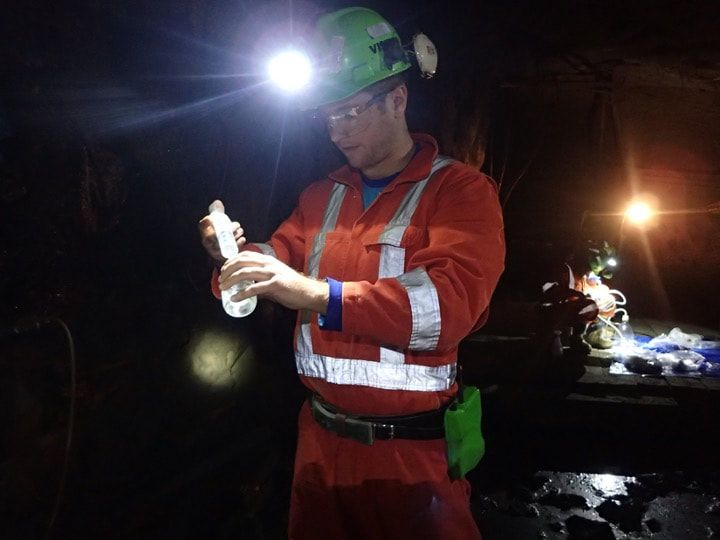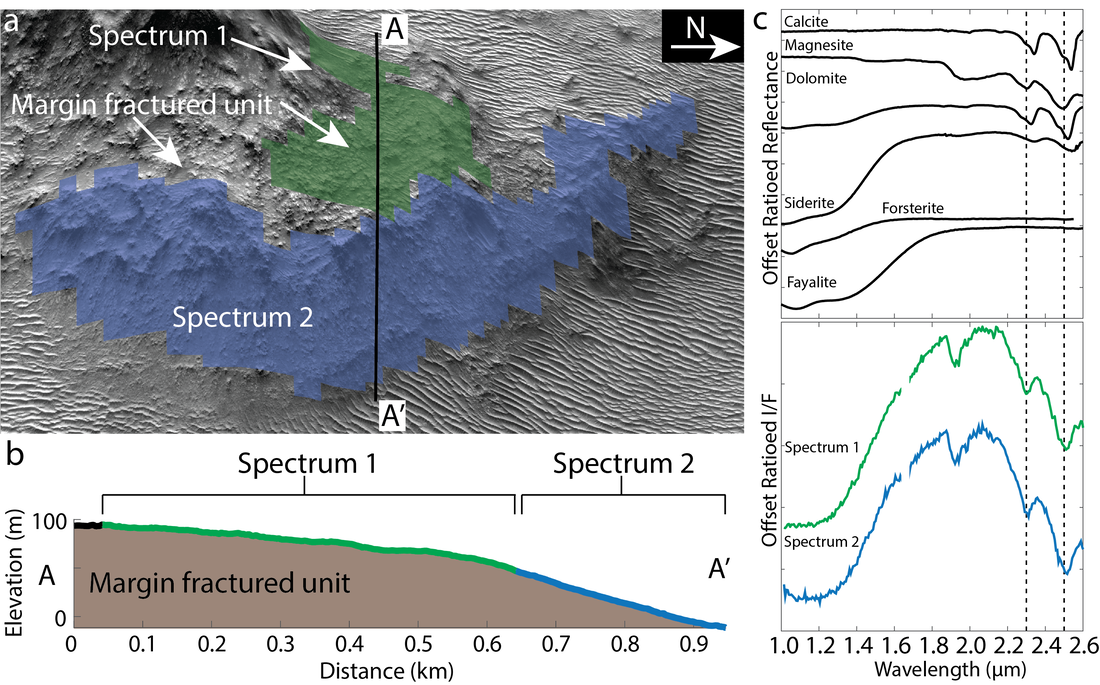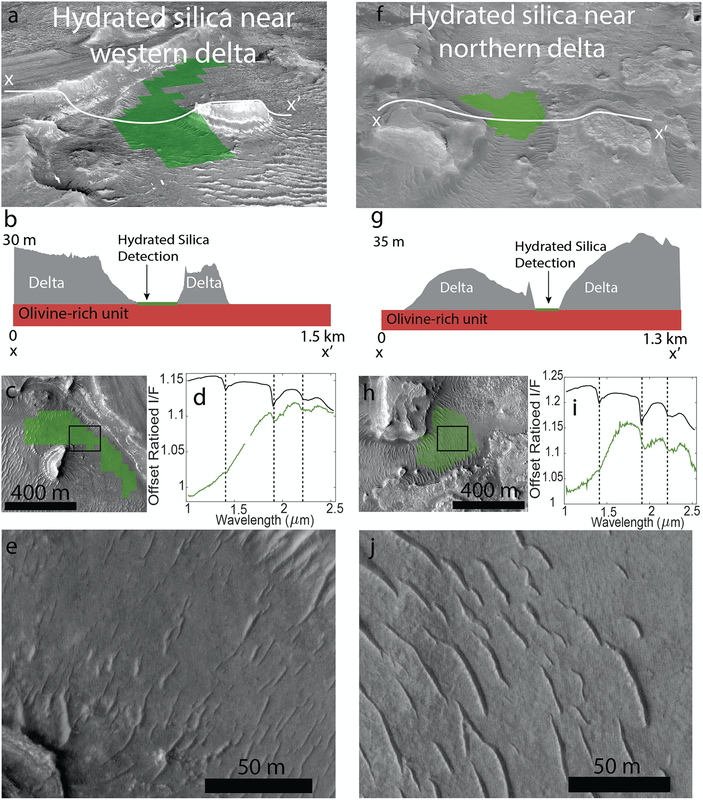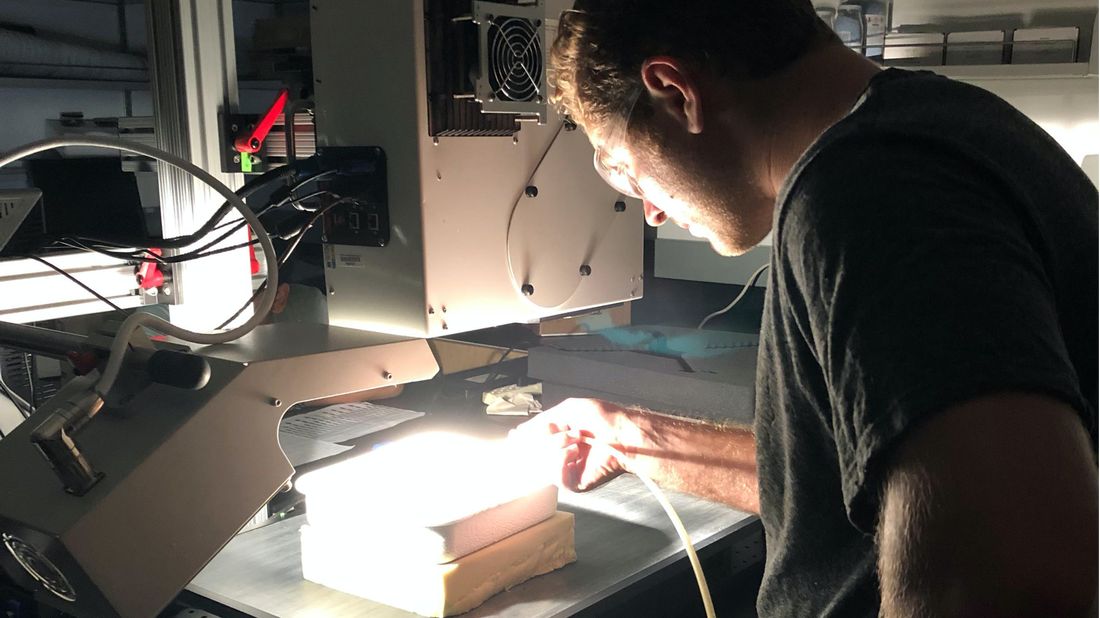subsurface habitability
 Kidd Creek Mine, 2.4 km underground, sampling billions-year-old groundwater. Photo Credit: University of Toronto Stable Isotope Laboratory
Kidd Creek Mine, 2.4 km underground, sampling billions-year-old groundwater. Photo Credit: University of Toronto Stable Isotope Laboratory
Subsurface microbial communities on Earth harness redox reactions to drive their metabolisms --sometimes in groundwaters older than a billion years. I am interested in how the chemical energy sources for redox reactions--oxidants and reductants--are produced within the crusts of terrestrial planets such as Earth and Mars.
Our research has demonstrated that radiolysis generates sufficient redox energy to sustain a modern martian biosphere where groundwater is present in the subsurface. We have also shown that ancient Mars likely hosted a long-lived habitable subsurface environment that microbes could have existed in. The deep subsurface of Mars is longest-lived and most stable habitable environment on the planet, and may host life today if groundwater still exists there. I am enthusiastic about future missions to study the subsurface of Mars via electromagnetic sounding and drilling, with an eye towards searching for extant subsurface life.
Our research has demonstrated that radiolysis generates sufficient redox energy to sustain a modern martian biosphere where groundwater is present in the subsurface. We have also shown that ancient Mars likely hosted a long-lived habitable subsurface environment that microbes could have existed in. The deep subsurface of Mars is longest-lived and most stable habitable environment on the planet, and may host life today if groundwater still exists there. I am enthusiastic about future missions to study the subsurface of Mars via electromagnetic sounding and drilling, with an eye towards searching for extant subsurface life.
the mars 2020 perseverance rover mission
I collaborated with colleagues on the Mars 2020 Science Team to integrate data from the Perseverance rover, Ingenuity Helicopter, and orbiters to characterize the geologic history, past habitability, and biosignature preservation potential of Jezero crater, Mars. Mars 2020 is cacheing samples of martian rock, soil, and atmosphere for return to Earth. Like other science team members, I regularly worked mission operations.
Remote sensing of Mars
Hyperspectral data of Mars has allowed us to detect mineral distributions that inform our interpretations of the planet's geologic history. I use this data, along with high-resolution images, to detect new minerals and determine the types of environments that they formed in --including evaluating the habitability of those environment. We have detected hydrated silica in Jezero crater--landing site of the Perseverance rover--which is exciting due to its high biosignature preservation potential.

From Tarnas et al. (2021), JGR Planets. Carbonates are detected in Jezero crater using data from the Compact Reconnaissance Imaging Spectrometer for Mars (CRISM) and placed in their geologic context using images and digital terrain models from the High Resolution Imaging Science Experiment (HiRISE). HiRISE image/DTM credit: NASA/JPL/University of Arizona.
Developing, testing, and applying new image analysis techniques
My colleagues and I developed new methods for analyzing hyperspectral images, tested them in a controlled, laboratory setting, and applied them to data of planetary surfaces to make novel discoveries. We have tested multiple applications of endmember extraction and target transformation techniques, and developed methods like Dynamic Aperture Factor Analysis/Target Transformation (DAFA/TT).


